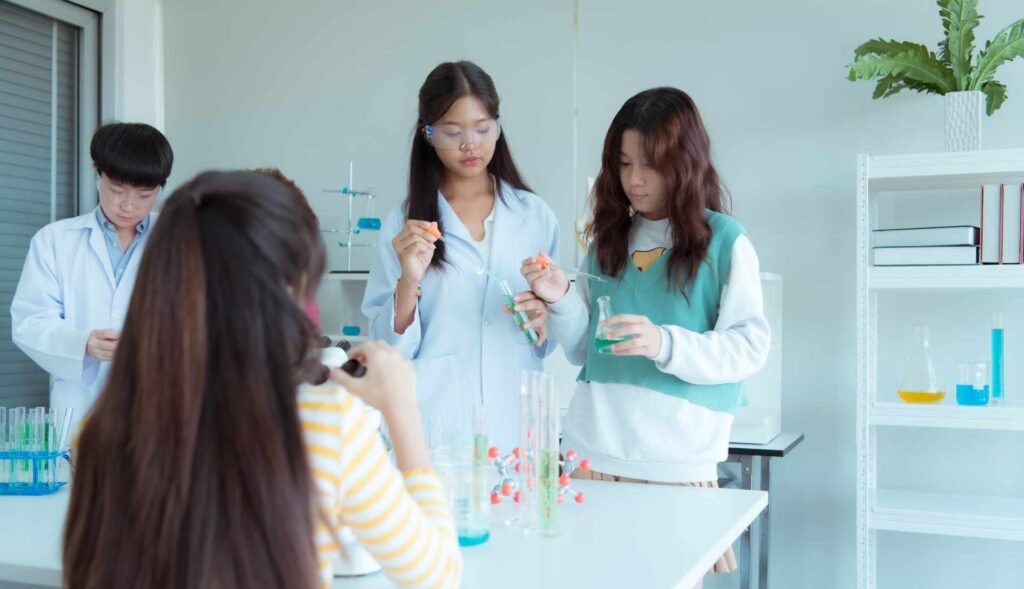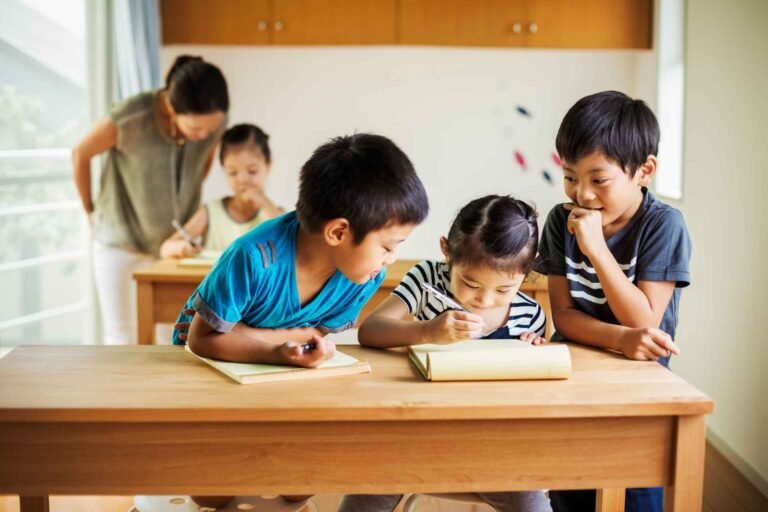Home » The Sycamore Center for Progressive Education Curriculum » Grade 9 Curriculum: Christian History
Grade 9 Curriculum: Christian History
Explore geography and global cultures from ancient civilizations to the Reformation.
Major Subjects: Bible, History, English, Filipino, Science, Math
Minor Subjects: Music and Art, Health, Physical Education, Home Economics and Livelihood Education, Information and Communication Technology


CORE SUBJECT
Bible 09
Introduction to Christian Apologetics, Part 1
Learning Outcomes:
By the end of the school year, a student must be able to begin an in-depth reflection on one’s faith and how it ought to manifest in terms of behavior.
More specifically, learners are expected to exhibit cognitive, affective, and kinesthetic competencies as manifested in the following outcomes:
- Demonstrate a genuine foundational understanding of the basic tenets of Christianity, regardless of denominational differences.
- Prepare to organize one's own personal faith based on core Christian values and virtues.
- Practice moral behavior even in small daily acts, in accordance with the mindset and principles of the Christian faith.
- Trace the story of God's redeeming love as they examine and overview the entire Bible.
Student References / Workbooks
- Mere Christianity by C. S. Lewis
CORE SUBJECT
History and Geography 09
Christian History
This course focuses on the various social, cultural, political, and geographical narratives throughout the development of the different monotheistic beliefs including, and most especially Christianity. These timelines cover history B.C. up to Christianity in the Modern Times.
Lessons in this course will be covered through various synchronous and asynchronous, online distance and in-person classroom activities that are aimed to create an immersive, engaging, relevant, and collaborative learning experience.
Learning Outcomes:
At the end of the school year, a student must be able to develop an authentic, informed and unique Christian identity that is aware of the religion’s plurality and rich history.
More specifically, learners are expected to exhibit cognitive, affective, and kinesthetic competencies as manifested in the following outcomes:
- Remember and detail significant events in history from various eras, and discuss how these events are relevant to the modern day.
- Examine the evolution of Christianity, considering its political, social, geographical, and religious aspects across various civilizations.
- Study key historical events, conflicts, and controversies, and develop personal viewpoints based on research and analytical reasoning.
- Critically analyze the stories and accounts in the Bible through in-depth research and discussions to evaluate the historical authenticity of Christian history narratives.
- Investigate historical stories and information through debates and reports to enhance historical comprehension and causal analysis skills.
- Identify with the cultures and notable figures of Christianity across diverse periods and locations.
- Cultivate an understanding and respect for the historical and cultural legacy of Christianity through discussions, role-playing, gamified activities, and multimedia resources.
Student References / Workbooks
- Collins, M. & Matthew A.P. (2003). The story of christianity: 2,000 years of faith. DK Publishing.
LANGUAGE SUBJECT
English Language Arts and Literacy 09
Literary Classics, Modern and Retold
This course covers literary classics, an introduction to literary studies, and academic writing.
Learning Outcomes:
More specifically, learners are expected to exhibit cognitive, affective, and kinesthetic competencies as manifested in the following outcomes:
- Analyze different elements of prose, play, and poetry through oral discussions and written compositions.
- Relate personal values with the literary works representative of various genres in group discussions.
- Create a formal report of an original study that follows accepted formatting conventions in the scientific community.
- Create works of literary art using both fixed and open forms of poetry.
Student References / Workbooks
- Till We Have Faces by C. S. Lewis
- Enchantress from the Stars by Sylvia Engdahl
- Shakespeare Made Easy: Romeo and Juliet, edited and rendered into modern English by Alan Durband
LANGUAGE SUBJECT
Filipino 09
Si Rizal at ang Kultura sa Panahon ng Kastila
Sa kursong ito, muling babalikan ang naging buhay at kultura ng mga tao sa panahon ng mga Kastila upang mabatid ang mga naging impluwensiya sa ating bayan nang sa gayon ay magkaroon ng kamalayan at maiugnay sa kasalukuyang panahon.
Gayundin, ay ang pagiging bihasa sa paggamit ng wikang Filipino sa pamamagitan ng pagsulat at pang-araw-araw na komunikasyon.
Learning Outcomes:
Sa pagtatapos ng taon, ang mga mag-aaral ay inaasahang maisabuhay ang mga kagalingan na naipamalas sa naging katungkulan ni Rizal sa pakikipaglaban at pagtatanggol ng bansa.
- Nakikilala ang mga ideya at pahayag na kaugnay sa mga pangyayari sa kasalukuyang panahon.
- Nailalapat ang mga aral at kaalaman mula sa mga binasang akda.
- Nagagamit ang angkop na mga salita o ekspresyon sa pagpapahayag ng sariling pananaw, pagpapaliwanag, at pagbibigay ng opinyon sa pamamagitan ng pagsulat o pakikipag-usap.
- Napagsasama-sama ang mga natutunan sa balarila at pagsulat upang makalikha ng makahulugan at epektibong komposisyon na naglalahad ng sariling pananaw o damdamin.
- Masusing sinusuri ang tamang asal at mga pagpapahalaga upang maging isang makabayan, tapat, at mapanuring mag-aaral.
- Nakikiisa sa pagpapaunlad ng lipunan gamit ang sariling wika, na nagpapalakas at nagiging kapaki-pakinabang na mamamayan.
- Nakakatulong sa pagpapaunlad at pagpapayaman ng kultura at tradisyong Filipino para maipasa sa susunod na henerasyon.
- Nakakapagbahagi ng opinyon tungkol sa mga isyu, aral, o konflikto sa mga binasang akda upang mahasa sa pakikipagtalastasan.
- Nabibigyan ng pagkakataon na balikan at iugnay ang mga natutunan sa mga nakaraang aralin sa kasalukuyang pag-aaral.
Student References / Workbooks
- Noli Me Tangere ni Virgilio S. Almario
- Si Crispin ni Tony Perez
STEM SUBJECT
Science 09
Chemistry
Learning Outcomes:
- Explain chemical principles behind physical phenomena through demonstrations;
- Recognize the complexity of reactions between subatomic particles through experiments and discussions;
- Formulate scientific points of view to develop critical thinking skills through the evaluation and interpretation of different forms of data;
- Apply and recognize the value of chemistry through simulations and demonstrations of real-life scenarios that reflect and can be explained by chemistry concepts.
- Design experiments and constructive peer review testing, using knowledge of different types of experimentation, to practice its applications through the study of scientific research.
Student References / Workbooks
- List books that students are required to get copies of, and/or books provided by teacher
- No need to include teacher-only references
STEM SUBJECT
Mathematics 09
Algebra 2
The curriculum of this course encompasses five key areas: Number Sense, Measurement, Geometry, Patterns and Algebra, and Statistics and Probability. It includes detailed study of topics such as Quadratic Equations and Inequalities, Quadratic Functions, Rational Algebraic Equations, Variations and Radicals, Parallelograms and Triangle Similarities, along with Fundamental Trigonometry Concepts.
This course lays a robust groundwork for Grade 10 Mathematics. Crucially, it equips students with essential concepts and practical skills vital for their progression in both their academic journey and as contributing members of society.
Learning Outcomes:
By the school year’s close, students are expected to exhibit both comprehension and regard for fundamental concepts and skills related to numbers and numerical understanding, measurement, geometry, patterns and algebra, along with statistics and probability.
This involves their practical application through suitable technological means in activities like critical analysis, problem-solving, logical reasoning, effective communication, establishing relationships, creating representations, and making practical decisions.
- Conduct in-depth exploration of mathematical relationships in various contexts, develop real-world problems using quadratic equations, inequalities, functions, and rational algebraic equations.
- Devise and precisely solve problems that involve radicals.
- Construct models of plane shapes and accurately develop and resolve realistic problems related to the sides and angles of polygons.
- Build models of three-dimensional figures and accurately create and solve problems related to these shapes.
- Utilize trigonometric ratios to devise and accurately resolve real-world problems.
- Highlight the significance and utility of mathematics in everyday communication and problem-solving.
- Foster positive traits like resilience and perseverance to enhance character development, integrating these qualities into discussions and mathematical problems.
- Design a practical project that reflects the student's learning journey, channeling it through their interests or passions.
Student References / Workbooks
- Algebra 2 A Teaching Textbook by Greg and Shawn Sabouri

